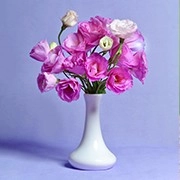King Protea Bloom

When we first see the King Protea, or Protea cynaroides, its large, dramatic blooms immediately grab our attention. Often called the "King Bloom," this flower isn’t just a pretty sight; it’s South Africa’s national flower and a symbol of strength and beauty.
Its striking appearance—with layers of spiky petals surrounding a central cone—makes it impossible to ignore, whether in gardens, wild landscapes, or floral arrangements.
Where the King Protea Grows
We find the King Protea mainly in the Western Cape of South Africa, thriving in regions known as fynbos, a type of shrubland with nutrient-poor soil and regular seasonal fires. These flowers have adapted incredibly well to their environment. After a wildfire, the King Protea can grow back from its underground stems, called lignotubers. This resilience allows it to survive in places where other plants might struggle, and it gives us a lesson in patience and regeneration.
Attracting Feathered Friends
One of the most fascinating things about the King Protea is how it interacts with wildlife. Its sweet nectar draws several bird species, including the orange-breasted sunbird, southern double-collared sunbird, malachite sunbird, and Cape sugarbird. As these birds feed, pollen sticks to their beaks and faces, helping the flower reproduce. We can imagine walking through a Protea garden and spotting tiny birds buzzing from flower to flower—an intimate connection between nature and the plant world that we rarely see in everyday life.
Insect Visitors and Pollination
While birds are the main visitors, we also notice that various insects are attracted to the King Protea. Bees, beetles, and butterflies often explore its petals and nectar. However, we still don’t fully understand how much these insects help with pollination compared to the birds. Observing them gives us insight into the delicate balance of ecosystems and reminds us that every visit matters, even if we can’t see the full effect right away.
Unique Growth and Care
We should also note that the King Protea prefers open, sunny spots with well-drained soil. In gardens, it’s best to avoid overly rich soil, which can harm the plant. Regular pruning helps it maintain its impressive bloom, and while it’s drought-resistant once established, young plants benefit from occasional watering. For those of us who enjoy gardening, growing a King Protea is both a challenge and a rewarding experience.
Symbolism and Uses
Beyond its ecological role, the King Protea holds cultural and symbolic significance. It represents courage, transformation, and renewal, qualities we can relate to in our own lives. Florists often use it in striking arrangements, and its long-lasting blooms make it perfect for special occasions. When we share a King Protea with friends or family, it quietly communicates admiration and appreciation in a way words sometimes cannot.
Visiting Protea Gardens
If we ever travel to South Africa, seeing the King Protea in its natural habitat is unforgettable. Fynbos regions like the Table Mountain National Park are excellent spots for observing these flowers up close. We can enjoy walking trails, spotting birds feeding, and learning how the plant survives in fire-prone landscapes. For garden enthusiasts, local nurseries offer seedlings, giving us a chance to bring a piece of South Africa into our own backyards.

Let’s Admire Together!
The King Protea isn’t just a flower—it’s a living symbol of strength, beauty, and the delicate connections between us, birds, and insects. Each time we notice its vibrant petals or see a bird sipping its nectar, we’re reminded of nature’s small wonders and the care it takes to thrive. So Lykkers, next time we spot a King Protea, let’s take a moment to truly admire its beauty and the remarkable story it tells about life and resilience.
King Protea blooms. 4K video.
Video by grow proteas

 · Nature Team
· Nature Team